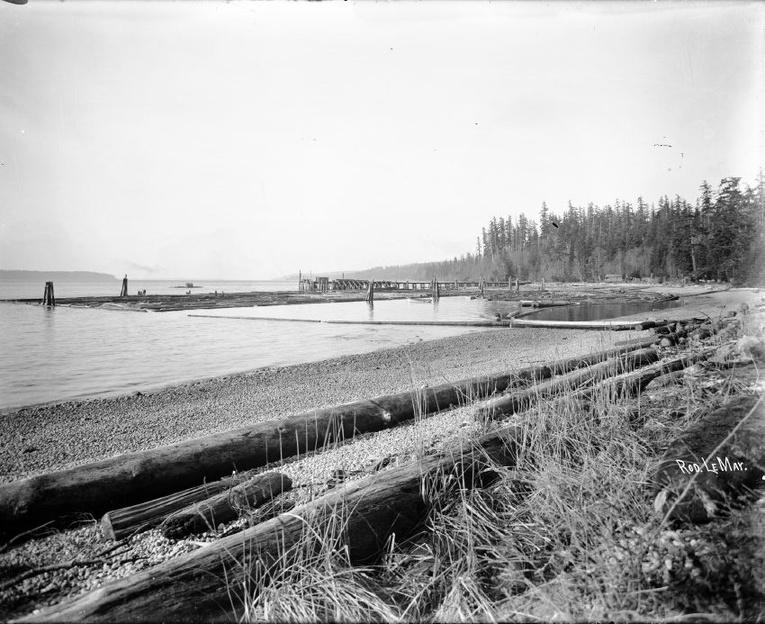
3 minute read
ʔahʔǰumɩχʷ
A little bit about the history of ʔahʔǰumɩχʷ ...
by Sharon Taylor
Advertisement
Willingdon Beach is the heart and soul of Powell River. It is here that residents and visitors alike come to relax, play, and enjoy community events such as concerts, the annual Easter Egg Hunt, international events, such as the B.C. Bike Race in July, and of course to view the magnificent sunsets for which qathet is known.
The history of the beach reaches far back in time. The traditional name for the area is ʔahʔǰumɩχʷ (Ah joo mieux) which means “ clear ground” in the ʔayʔaǰuθəm language. For thousands of years the Tla’amin peoples lived at seasonal camps all along the coast, including the Westview and Grief Point areas. This area, now known as Willingdon, was important for catching small tasty chum in the near-by creek. The Tla’amin people would camp here in the fall when the salmon ran up the creek, while smoke-drying these fish. The area was also good for collecting cedar roots which were harvested in preparation for weaving. Cedar being a sacred tree for the Tla’amin people is used in many different ways.
The grassy sections of the area were used as a sports field. And the clear flat ground at the beach allowed canoes to land easily on the beach, which they still do today when they arrive for special events held in the park, like the Canoe Journey. In addition, the Tla’amin people would often walk up a trail from the beach to Cranberry Lake, to pick wild cranberries and other berries and plants.
Of course, fishing here at ʔahʔǰumɩχʷ was very accessible. All sorts of traps were engineered and used to catch fish and other food sources from the ocean. One trap involved setting up a net next to the barnacles which would catch perch and rock cod. Another method was that someone would take branches and scare the herring towards the shore where others were waiting to catch them. They also made fish traps with rocks in a variety of geometrical shapes. As the water went out with the tide fish would be trapped in pools of water making them easier to catch. They also used harpoons and hooks. All these methods allowed the Coast Salish people to sustain large populations and settlements.
The colonial origins of Willingdon Beach Trail come from a logging railway. Up until 1910, the Michigan-Puget Sound Logging Company railway dumped its logs at the site of the mill in Townsite. When construction of the Mill started in 1910 the railway grade was extended to a new dumpsite known then as Michigan’s Landing (now Willingdon). The logs were dumped and sorted there. A home was built for the foreman of the log pond and booming grounds. He also ran a small dairy farm close to the beach. Eventually more shake cabins were built.
There was a scarcity of houses in the new Townsite so the Powell River Company (PR Co.) also leased part of the beach for houses. When logging in the surrounding area ended in 1918, the rails were lifted and the PR Co. removed the ties. By 1923, 73 people called Michigan Landing home. The Landing was a convenient spot to live as residents could walk the railroad tracks to and from town and the mill site. However, it became too populated and in 1926 the PR Co. wanted to use the land; the dwellers were given a seven days notice.
The rail ties from town site to Michigan Land were removed in 1926, and in 1927 the beach and surrounding grounds became a park. On July 1, 1927 Michigan Landing was officially renamed as Willingdon Beach when Lord Willingdon, who was then the Governor-General of Canada, made a visit to Powell River. The railway grade became known as the Willingdon Beach Trail.
Willingdon Beach has from been part of everyday life for generations and has served many different needs. When visiting the park, imagine how people of the past shared this same area that we enjoy today. No matter how the land was used by different people, we have all had the pleasure of sharing natures gift of beauty!





